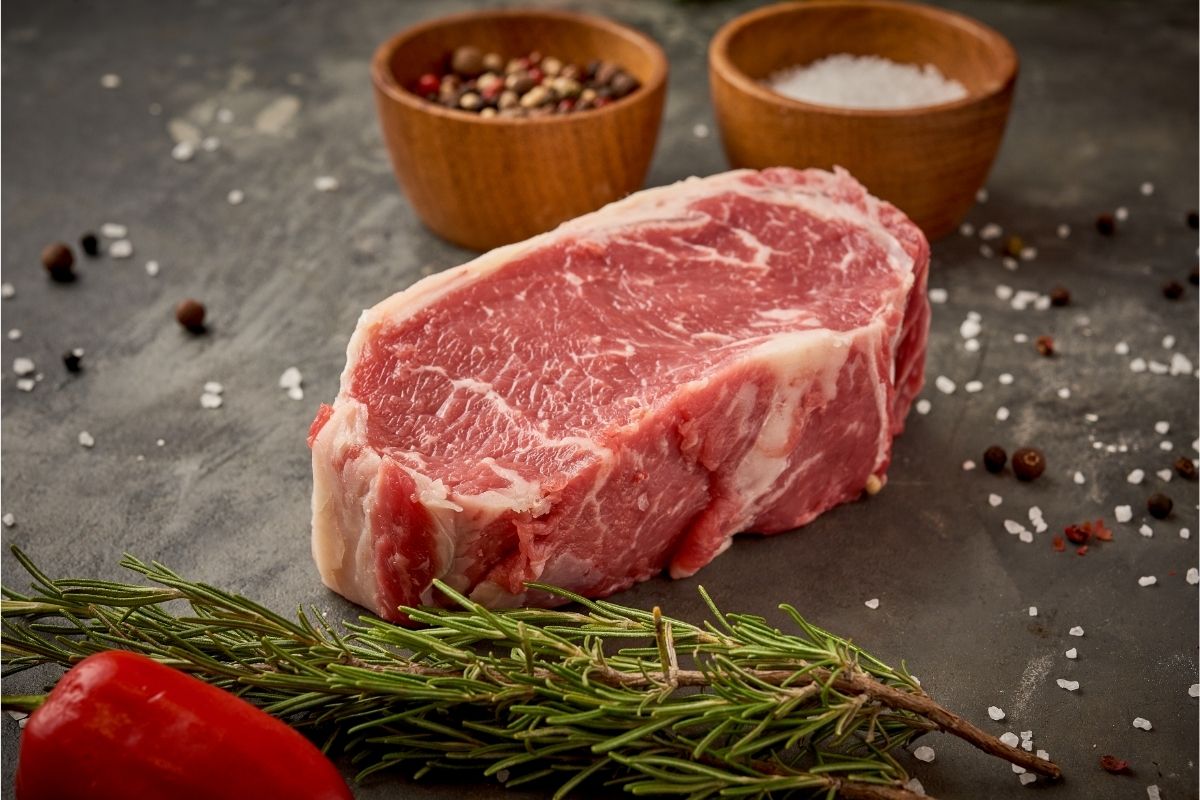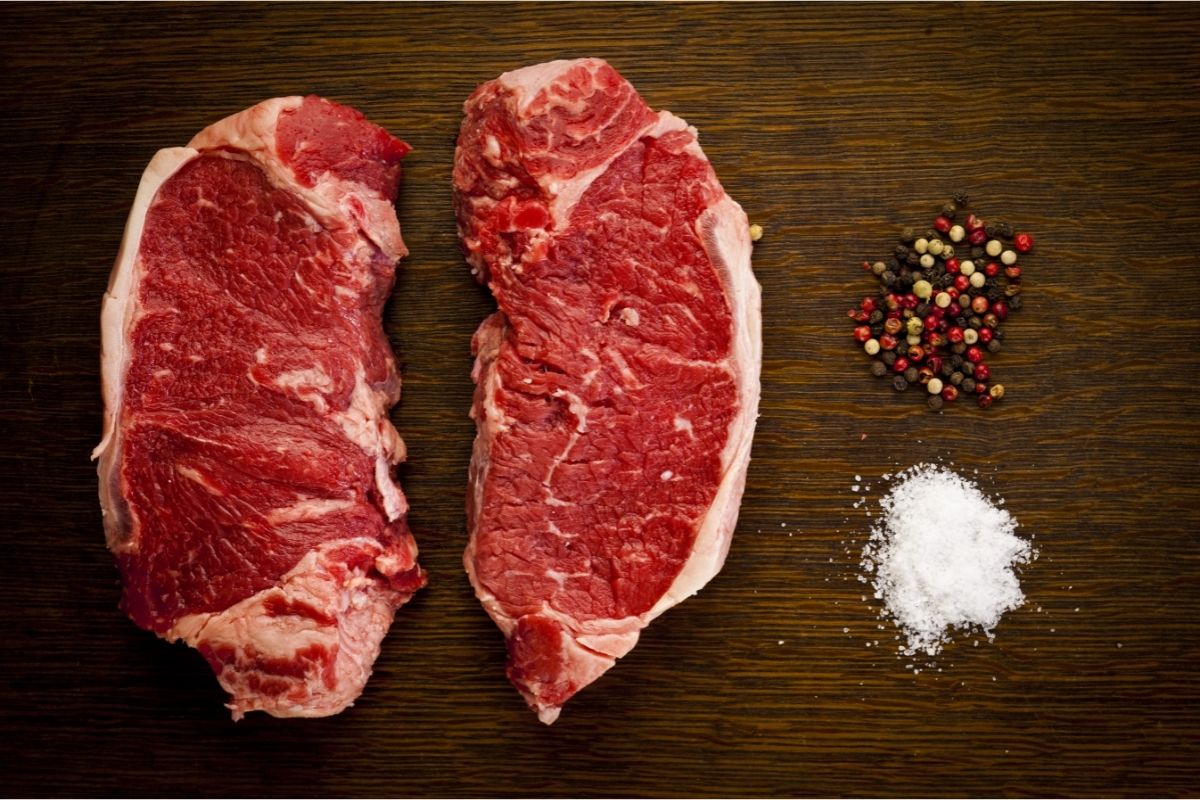In the world of beef steaks, everyone has their favorite kind. Whether it is ribbed, round, flank, or brisket. Everyone has some idea of their favorite cut they’d have in their perfect meal.
However, for the majority of people at least, the two that probably come up the most are the New York Strip, and the sirloin.

This had led to endless debates, both online and off, of people discussing which type is best for what type of meal or cooking style.
But at the same time, many people can get confused when they hear about these discussions. Are they all that different?
Well, that is what the article is here to discuss. We’re going to outline what exactly each cut of meat is, and what makes them different from each other, as well as perhaps some similarities between them.
The Different Cuts Of Beef
Before we go any further, it is worth outlining what the different slices of beef are out there. After all, it is helpful to know what something isn’t as much as what something is.
We have already mentioned a few different cuts of beef in this article so far. In most cases, there is usually a little overlap between the different cuts (meat doesn’t come prepackaged in the cow after all!) and can vary quite a lot from country to country.
The American cuts of beef, for example, have completely different names and locations from the cuts that butchers in the United Kingdom use.
So, for a little clarification, here are all the primal cuts of beef that are used around the United States:
- Chuck – This is a forequarter cut of beef (the front end of a cow or bull), and is often where a chuck steak or clod steak comes from. It will also be turned into ground beef if there is little to no bone in the chuck steak.
- Ribs – Another forequarter cut of a cow or bull, the ribs are where you would normally find your prime and short ribs, as well as your rib-eye steak, unsurprisingly.
- Brisket – This delicious cut comes from the chest of the animal, around where the forelimbs are. This is where the steak for corned beef and pastrami typically comes from, too.
- Plate – Another forequarter cut, you can get short ribs from this cut of meat too. More often than not, however, this cut tends to be used for pot roasts or turned into ground beef. This is because it is usually one of the toughest sections of meat that you will find on an animal when butchering it.
- Tenderloin – This cut of meat comes from the hindquarters of an animal (the back half of a bull or cow), and is typically one of the smallest primal cuts you can find out there. It is also, as the name suggests, one of the most tender cuts you can get and can be used in a wide range of prime cuts, from classic tenderloin steaks to filet mignons, to T-bones and porterhouse loin steaks too.
- Short loin – This is another hindquarter cut of beef. It is also where you’ll most often find the meat that is used in strip steak, such as the New York strip cut.
- Sirloin – This is the less tender, but more flavorful neighbor to the tenderloin steak. Sirloin is where you will often get cuts such as the classic sirloin steak from (surprise, surprise).
- Plate – Being around the bottom middle of the animal, the plate is technically both a forequarter and hindquarter cut, thanks to its placement and where you can cut skirt steaks from.
- Flank – This hindquarter primal cut is quite tough, only being used for flank steaks and ground beef for the most part.
- Round – The largest hindquarter primal cut, this type of beef has very little extra fat, and can be quite tough.
- Shank – Last, but certainly not least, these cuts are usually the toughest cuts of meat, thanks to them being around the legs that the animals most use, so there’s very little fat. Because there are two legs for each quarter, you can also have foreshanks and hind shanks
Now, with that out of the way, let’s discuss what you came here for: The specific cuts of meat.
Sirloin Steak
As we already mentioned, Sirloin steak comes from the cut of beef that shares its name with this delicious slice.
As explained earlier, the sirloin is located at the top of the hindquarters of the animal, between the round and the short loin.
The natural grain of the muscle fibers runs from top to bottom, so look at the side of the steak that has the grain running down instead of across.
This is probably one of the most popular cuts of meat that is eaten around the world. Its balance of both tenderness and flavor makes it ideal meat in a restaurant that can be cooked to pretty much anyone’s tastes.
New York Strip

This type of steak, as we mentioned before, comes mostly from the short loin primal cut. The hindquarters are where many of the prime cuts of delicious steak come from, and the New York Strip is no different.
The New York strip has some of the most intense flavors that you will find in steaks.
It can be either cooked rare, medium rare, medium, medium well, well done, or even burnt. If you’re looking for a perfect steak, then the New York strip is always your best bet.
Whilst you may occasionally find boned short loin steaks, most New York strips are sold boneless.
What Are The Differences?
So, now comes the time to compare these tasty cuts!
Generally speaking, these cuts can be pretty hard to distinguish if you don’t know exactly what you are looking at. They largely have a very similar shape and are usually sold in very similar sizes.
But, if you know what you are looking for, you’ll find that there is plenty to separate both of these delicious kinds of beef.
Texture
The texture is probably the place where you can see the most differences. Because strip steak tends to come from an area of the cow that isn’t exercised that much, you’ll find a higher amount of fat in these areas than in sirloin steak.
As a result, the marbling, that effect of fat that is shaped around muscles, is typically a lot easier to spot than in sirloin.
Flavor
Whilst everyone’s tastes will differ, the marbling of the New York strip steak tends to make this a lot more succulent to taste, as well as a little chewier.
For a sirloin to have the same type of flavor, chefs will usually marinate or prepare their sirloin steak well in advance to get the same result.
This isn’t to say that sirloins have less flavor. But with their higher muscle content and less marbling, you’ll find that it isn’t as chewy as strip steak, which means it will likely sit in your mouth for less time, so its flavors aren’t enjoyed for the same duration.
Uses And Versatility
This is where sirloin has a slight edge over strip steak. Whilst strip steak frequently has more flavor, it usually means that it is the main focus of a meal, and isn’t added to anything else.
Comparatively, sirloin is added to pretty much any kind of meal!
Whether that’s a shish kebab or a taco appetizer, to being served in a sandwich, sirloin is often thrown with many other delicious foods to create iconic meals and recipes. Something that strip steak, partly due to its higher cost and rarity, doesn’t have.
Conclusion
So, there you have it. Whilst New York Strip steak might be the more tasty cut on its own, sirloin is simply easier to add to any recipe you want to try.
So, go on, treat yourself!
- The 9 Best BBQ Grills for Smoking Brisket - December 29, 2022
- 6 Mouth Watering Grilled Shrimp Recipes - September 16, 2022
- 6 Delicious Grilled Desserts - September 16, 2022
